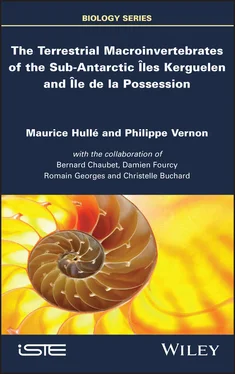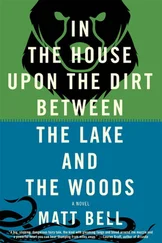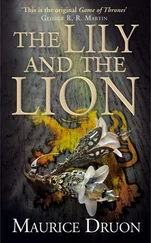5 Foreword 1
6 Foreword 2
7 Acknowledgements
8 Introduction
9 Begin Reading
10 Appendix
11 References
12 Index
13 End User License Agreement
1 v
2 iii
3 iv
4 ix
5 x
6 xi
7 xiii
8 xiv
9 xv
10 xvii
11 xviii
12 xix
13 xx
14 1
15 2
16 3
17 4
18 5
19 6
20 7
21 8
22 9
23 10
24 11
25 12
26 13
27 14
28 15
29 16
30 17
31 18
32 19
33 20
34 21
35 22
36 23
37 25
38 26
39 27
40 28
41 29
42 30
43 31
44 32
45 33
46 35
47 36
48 37
49 38
50 39
51 40
52 41
53 42
54 43
55 44
56 45
57 46
58 47
59 48
60 49
61 50
62 51
63 52
64 53
65 54
66 55
67 56
68 57
69 58
70 59
71 61
72 62
73 63
74 64
75 65
76 66
77 67
78 68
79 69
80 70
81 71
82 72
83 73
84 74
85 75
86 76
87 77
88 78
89 79
90 80
91 81
92 82
93 83
94 84
95 85
96 86
97 87
98 88
99 89
100 90
101 91
102 92
103 93
104 94
105 95
106 96
107 97
108 98
109 99
110 100
111 101
112 102
113 103
114 104
115 105
116 106
117 107
118 108
119 109
120 110
121 111
122 112
123 113
124 114
125 115
126 116
127 117
128 118
129 119
130 120
131 121
132 122
133 123
134 124
135 125
136 126
137 127
138 128
139 129
140 130
141 131
142 132
143 133
144 134
145 135
146 136
147 137
148 138
149 139
150 140
151 141
152 142
153 143
154 144
155 145
156 146
157 147
158 148
159 149
160 150
161 151
162 152
163 153
164 154
165 155
166 156
167 157
168 159
169 160
170 161
171 162
172 163
173 164
174 165
175 166
176 167
177 168
178 169
179 170
180 171
181 172
182 173
183 174
184 175
185 176
186 177
187 178
188 179
189 180
190 181
191 183
192 184
193 185
194 186
195 187
196 188
197 189
198 190
199 191
200 192
201 193
202 194
203 195
204 196
205 197
206 198
207 199
208 200
209 201
210 202
211 203
212 205
213 206
Series Editor
Marie-Christine Maurel
The Terrestrial Macroinvertebrates of the Sub-Antarctic Îles Kerguelen and Île de la Possession
Maurice Hullé
Philippe Vernon
with the collaboration of
Bernard Chaubet
Damien Fourcy
Romain Georges
Christelle Buchard

First published 2021 in Great Britain and the United States by ISTE Ltd and John Wiley & Sons, Inc.
Apart from any fair dealing for the purposes of research or private study, or criticism or review, as permitted under the Copyright, Designs and Patents Act 1988, this publication may only be reproduced, stored or transmitted, in any form or by any means, with the prior permission in writing of the publishers, or in the case of reprographic reproduction in accordance with the terms and licenses issued by the CLA. Enquiries concerning reproduction outside these terms should be sent to the publishers at the undermentioned address:
ISTE Ltd
27-37 St George’s Road
London SW19 4EU
UK
www.iste.co.uk
John Wiley & Sons, Inc.
111 River Street
Hoboken, NJ 07030
USA
www.wiley.com
© ISTE Ltd 2021
The rights of Maurice Hullé and Philippe Vernon to be identified as the authors of this work have been asserted by them in accordance with the Copyright, Designs and Patents Act 1988.
Library of Congress Control Number: 2021937387
British Library Cataloguing-in-Publication Data
A CIP record for this book is available from the British Library
ISBN 978-1-78630-760-6
Photography: Bernard Chaubet (INRAE)
Cartography: Damien Fourcy (INRAE)
Species identification: Romain Georges (University of Rennes 1), Christelle Buchard (INRAE)
The extraordinary American conservationist and thinker Aldo Leopold wrote: “To keep every cog and wheel is the first precaution of intelligent tinkering.” To keep every cog and wheel presupposes that each one of them is not only known but can also be identified. For most places, knowing the full diversity of life is only imaginable. And for most people, identifying that diversity is unthinkable. Yet, a few specially endowed naturalists seem to be able to do so. And because they are often too little valued in our modern scientific world, their knowledge passes with them into history. Thus, places and the people who value them frequently fall into a cycle of knowing and forgetting.
Yet, every now and then, naturalists and writers come along who are determined to break that cycle. They recruit, through a combination of tenacity, charm and a fierce love for a place and its diversity, a host of helpers. Spurred on by the positive feedback that comes from enthusiasm, they recruit even more extensively. Eventually, they deliver a monograph of life. A record of a place’s diversity and the means for others to know it in all of its exquisite detail. In doing so, they make forever known a part of our world that would otherwise have remained trapped in that cycle of light and dark.
Here, Maurice Hullé and Philippe Vernon have done just this for the larger invertebrates of the extraordinary sub-Antarctic islands of the Îles Kerguelen and the Île de la Possession.
Doing so could not have been easy. Scattered knowledge is one thing. But finding the animals to verify the knowledge and to captivate the attention of new recruits is quite another. The sub-Antarctic islands are simply gorgeous and apparently teeming with life. Yet, most are no longer what they once were. On islands free of introduced species – such as rodents, cats, carnivorous beetles, herbivorous slugs and system-altering weeds – the abundance of invertebrates is extraordinary. Beetles, moths and other insects are simply everywhere, even in the apparently hostile habitats such as fellfields. The coastal zones no longer stand out as special because of their abundance of insects (notably some very strange flies). Yet on islands such as the Îles Kerguelen and the Île de la Possession, where introduced species have had much time to do their work, abundances, except of the introduced species and some coastal inhabitants, are very low. Low to the point of thinking that some species have gone forever. Yet, often they have not. It simply takes a great deal of work to find them. And a very special talent of combining relentless enthusiasm for hard field work and exceptional charm to keep people coming back in search of knowledge, to look at more specimens and answer more questions. Questions that can be remarkably uncomfortable to ensure that the knowledge is secure.
Such tenacity, a characteristic of the authors, results in a handsome reward, and this monograph of the larger terrestrial invertebrate life of these islands is just such a reward. How extraordinary to have this work. The question “I wonder what this is?” is answered readily. And with that question addressed, immediately others can be posed. What does it do? What is its history of abundance? What is its future? How do we mitigate further change?
Читать дальше













